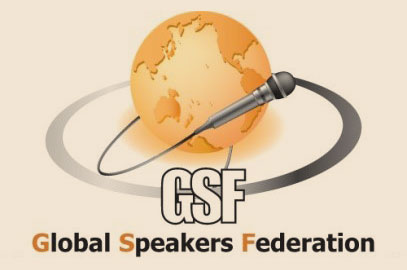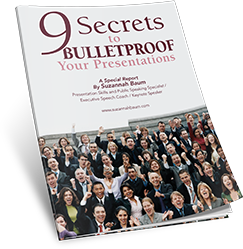Elizabeth Gilbert Eats, Prays, Loves…and Speaks!
Well here’s a speaker you just want to sit down and have a drink with! Elizabeth Gilbert, author of the best-selling book and recent movie Eat, Pray, Love, shares her thoughts on creativity and the notion of “creative genius” in this 19-minute speech at TED – and in the process, shows her audience how very funny, thoughtful and well-spoken a writer – and a speaker – she is.
Elizabeth excels in many ways in this talk. And there are some small things that she might have ‘tweaked’ to make it even more powerful.
STRENGTHS IN DELIVERY:
1. She’s funny – and here’s why: There were a few instances of great use of language to get a point across. At around 1:45, she laments how some people ask her if she thinks that she’ll “die on a scrapheap of dreams with my mouth filled with the bitter ash of failure” because she’ll never be able to follow up the success of her best-selling book. This comment is quite lengthy, and she almost gets out of breath as she says it. This makes it go from a ‘witty remark’ to just a little outrageous, thereby pushing the audience from a potential chuckle to an outright laugh. Well done. If you can get your audience to laugh in the first 2 minutes, there’s a much better chance of having them sit up and listen to you for the rest of your speech. (I’d also like to give credit to her vivid metaphor of “It’s like asking someone to swallow the sun.” That’s a great visual!)
2. “Messy” – but enthusiastic and authentic. Like Jamie Oliver in last month’s blog post, Elizabeth can be considered a “messy” speaker…but in a good way. She uses ‘crutch words’ quite a lot, such as “‘know,” “like,” and “um,” and she clasps and rubs her hands (and plays with her fingers) extensively in the first 2 minutes, after which she seems to relax a little . But what she displays in a somewhat ‘imperfect’ delivery style, she makes up by being so enthusiastic, authentic, and compelling. However – there are times when I would have liked to see her be more forceful with her language; statements like “The question that I kind of want to pose is this…why not?” Eliminate all the “sort of,” “kind of,” and “try to” out of your speeches. And do try to be aware of how often you say “um”, and attempt to reduce it.
3. Leans forward: It seemed like Elizabeth would lean into her audience when making some of her points, which I always find to be a subtle but effective way of emphasizing a point, as well as getting closer to an audience.
STRENGTHS AND TWEAKS IN CONTENT:
It was really good, but with these small edits…
Speech structure: Here’s the thing: I truly enjoyed listening to this speech. She had some interesting points about the history of creativity and creative genius, she poked fun at the sustainability of her own success, and she shared some good stories about how other creative individuals received their inspiration. She also delivered the speech in a way that felt like we were good friends discussing this topic over drinks.

Identify the main point. After putting the main hypothesis out there, she then goes on to talk about the idea of the creative ‘genius’ as a muse, something separate to the artist, and not to be confused with the artist himself/herself, and how it was the merging of the artist as the genius – becoming one person – was likely the reason for many of the psychological distresses of the artist, from the Renaissance to now. THIS was the premise of the speech. THIS is the main hypothesis. And therefore, THIS point should have been brought up earlier in the introduction, within the first 2.5 minutes, as the main point. Instead, she seems to embark on a ‘stream of consciousness’ discussion, without laying out the exact premise in the early stages of her speech.
More detail on what you’re going to talk about – right from the beginning – goes a long way towards setting audience expectations. For example, Jamie Oliver’s common theme throughout his TED speech is how necessary it is to change eating habits and raise nutritional education as a priority in schools. Sir Ken Robinson spoke of how we, and the education system, have to open up to the importance of creativity and creative learning so that we don’t ‘lose’ young children along the way who may learn differently. Eve Ensler spoke about the continued resilience of women and girls in the face of devastating circumstances and the necessity of recognizing and supporting them. These three speeches made it evident, within the first couple of minutes of their introductions, exactly where they were going to focus. So while Elizabeth’s speech brought up some very interesting points, it may have been lacking some of that initial focus.
But she pulls it together at the end. That being said, she is redeemed by compelling content through the body of the speech, and a fairly defined conclusion that brings together the main point of her speech; that the genius and inspiration is on-loan to you, rather than a part of you, and that you should embrace it when it finds you. Certainly a unique, inspirational message for the artists out there.



